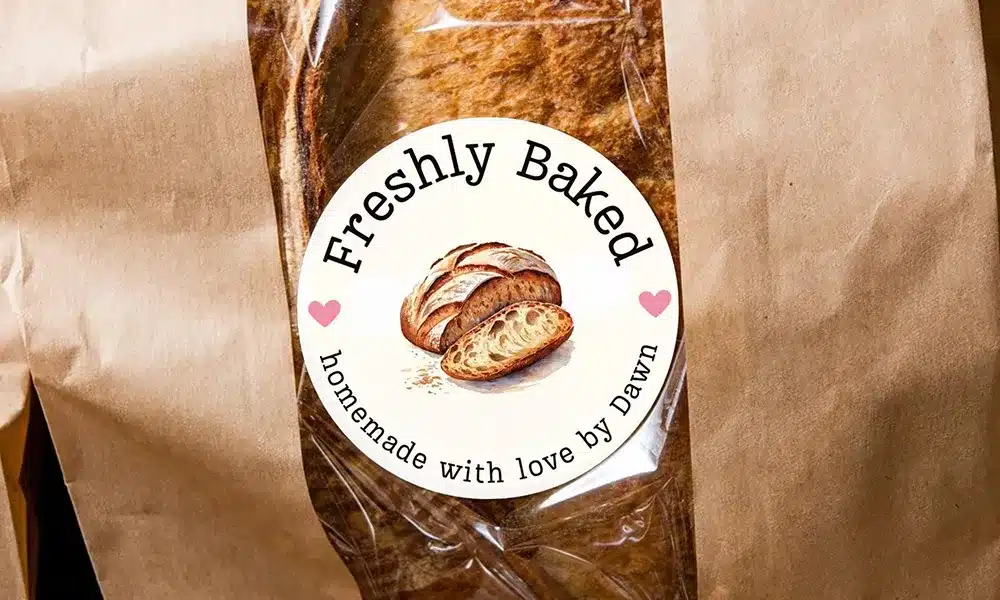Introduction
In today’s world, stickers have evolved far beyond simple decorations. Whether used in commercial advertising or for personal items, stickers play an essential role across industries. Choosing the right sticker material is crucial to ensure functionality, durability, and aesthetic appeal. This guide delves into the most common sticker materials, exploring their pros and cons to help you make the best decision for your needs.
Sticker applications can be broadly categorized into two groups: personal use (think laptops, water bottles, or car bumpers) and business use (such as product labels or promotional advertising). Each use case comes with its own set of requirements. Selecting the appropriate material can significantly enhance a product or brand’s visual impact while extending the sticker’s lifespan. Let’s explore the world of sticker materials and find the perfect match for your application!
Sticker Composition: Materials, Adhesives, Backing, and Surface Finishes
Understanding the basic composition of stickers is the first step in choosing the right material. A high-quality sticker is more than just the design you see; it’s a combination of several layers working together:
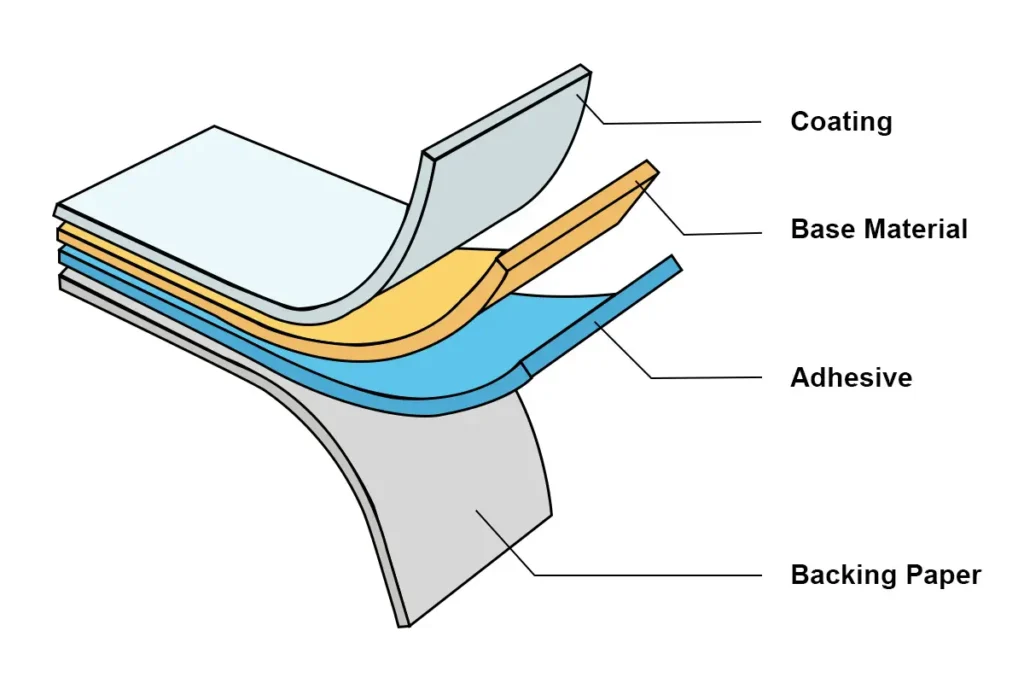
- Material: The outer layer, typically made of paper, vinyl, polyester, or similar materials, determines the sticker’s durability and appearance.
- Adhesive: The backing layer that dictates the sticker’s stickiness. Adhesives can be permanent, removable, or designed for special purposes (e.g., repositionable or low-temperature adhesives).
- Backing Paper: Protects the adhesive layer. The quality of the backing affects the sticker’s storage and ease of application.
- Surface Finishes: Includes options like gloss, matte, UV coating, foil stamping, and embossing. These finishes impact the sticker’s texture, shine, and durability.
Six Common Stickers Materials: Uses, Pros, and Cons
1.White Gloss/Matte Vinyl Stickers
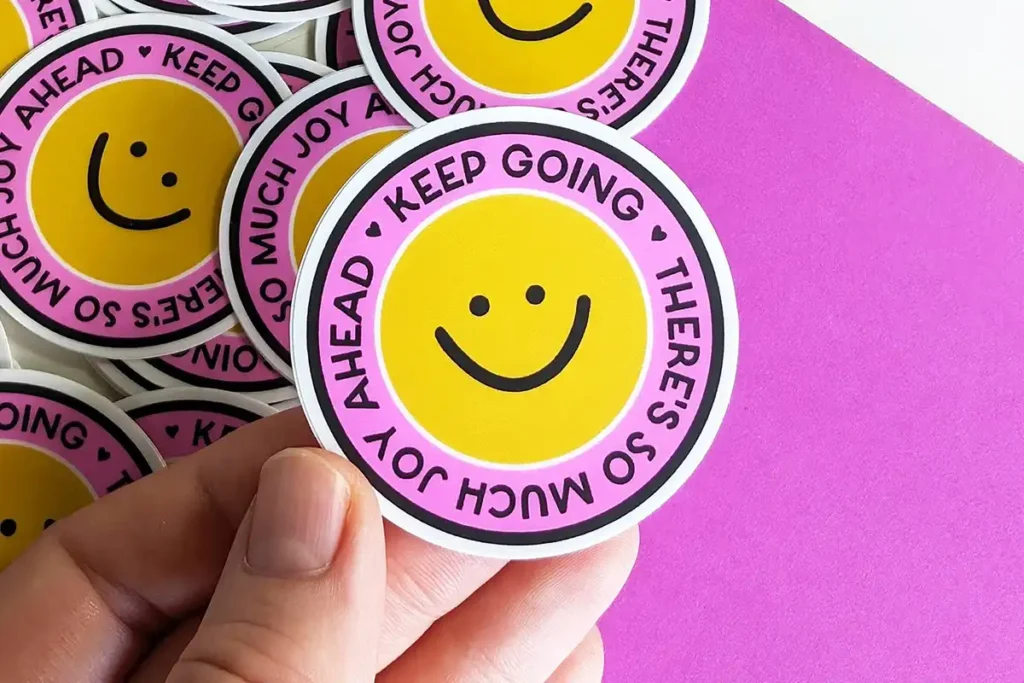
Uses:
The most popular and versatile material, used for outdoor ads, car decals, product labels, and office decor. Its durability and print quality make it ideal for branding and long-term applications.
Pros:
- Excellent weather resistance, withstanding UV rays, rain, and harsh environments.
- Strong and durable, with high tear resistance.
- Supports high-quality printing for crisp images and text.
- Available in gloss or matte finishes to suit different design needs.
Cons:
- Higher cost compared to paper materials.
- Adhesion may weaken in extremely low temperatures.
2. Clear Vinyl Stickers

Uses:
Perfect for window stickers, transparent labels, and car window decals. Clear vinyl allows the design or product beneath the sticker to remain visible, making it ideal for applications requiring background visibility.
Pros:
- High transparency, preserving the visibility of the background.
- Good weather resistance, suitable for outdoor use.
- Adapts well to smooth surfaces.
Cons:
Less scratch-resistant than white vinyl, making it more prone to damage.
May highlight imperfections on uneven or cluttered surfaces.
3. Paper Stickers
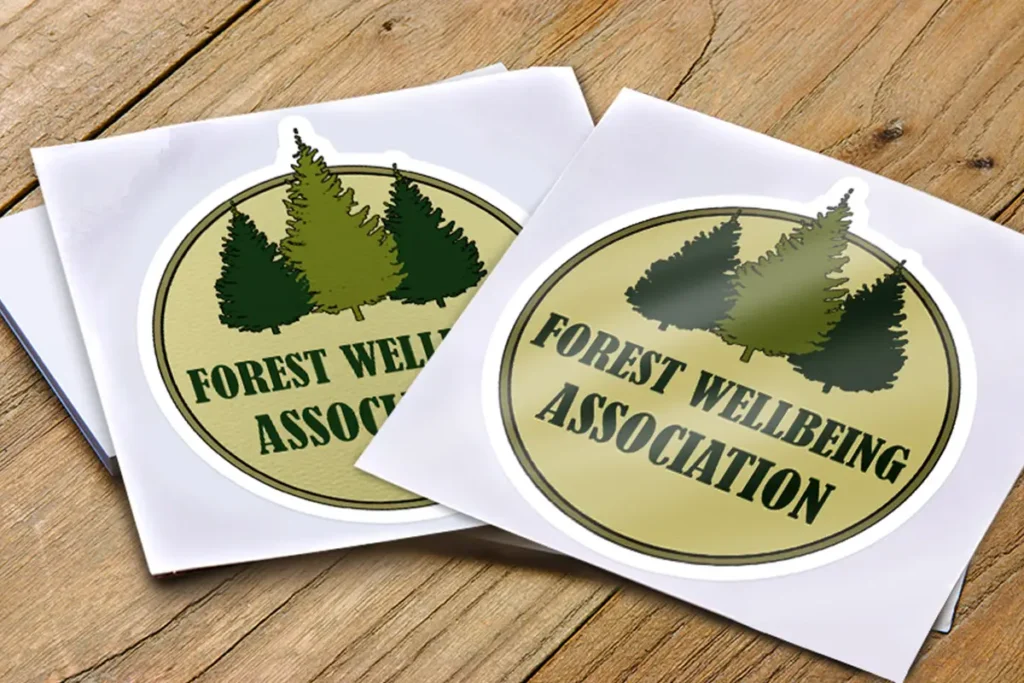
Uses:
Ideal for indoor decor, short-term promotions, and temporary labels. Cost-effective and suitable for short-term use, such as campaigns or trial labels.
Pros:
- Low cost, making it ideal for bulk production.
- Excellent print quality with vibrant and sharp colors.
- Easy to cut and process into various shapes.
Cons:
- Not water-resistant, making it unsuitable for outdoor use.
- Tears easily and has limited durability.
4. Polyester (PET) Stickers
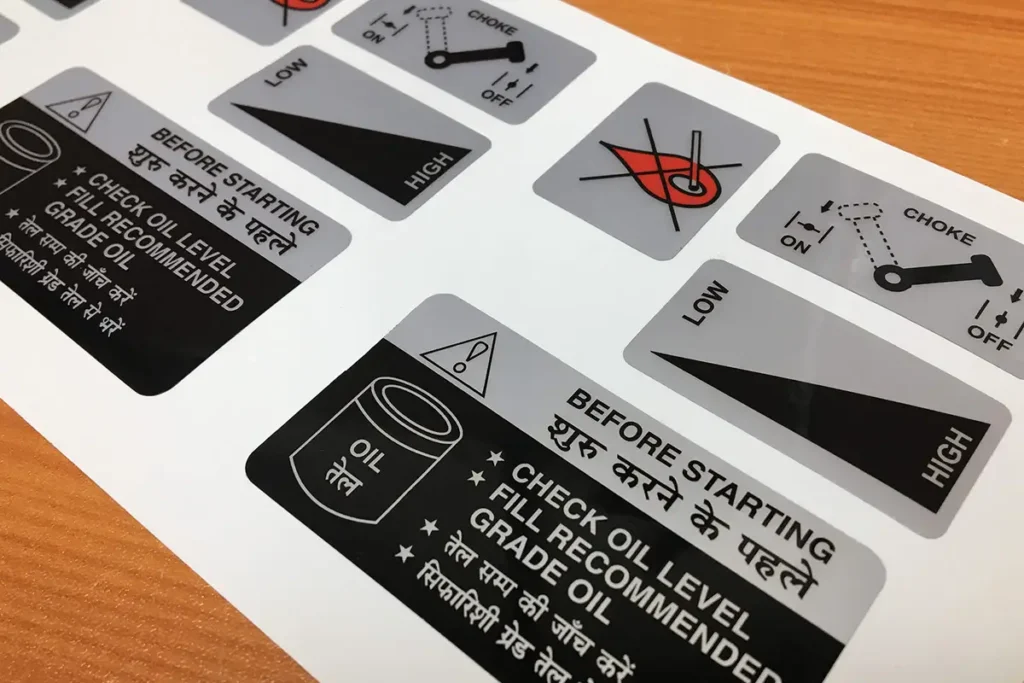
Uses:
Commonly used for premium labels, tamper-evident stickers, high-temperature, and chemical-resistant environments.
Pros:
- High resistance to temperature, water, and chemicals, making it suitable for extreme conditions.
- Strong anti-counterfeit properties, ideal for security and premium branding.
- Smooth surface, perfect for high-resolution printing.
Cons:
- Relatively expensive.
- Less flexible than paper, which can make application on curved surfaces challenging.
5. Holographic Stickers

Uses:
Widely used for tamper-proof labels, limited edition branding, and luxury packaging. The holographic technology provides unique visual effects and enhances brand appeal.
Pros:
- Distinctive optical effects and anti-counterfeit functionality.
- Highly recognizable, making it effective in preventing forgery.
- Eye-catching visual appeal, perfect for high-end products.
Cons:
- High production cost, making it more expensive.
- Printing quality can sometimes be uneven due to the holographic layer.
6. BOPP Stickers

Uses:
BOPP (Biaxially Oriented Polypropylene) stickers are commonly used for food and beverage labels, cosmetics, and pharmaceuticals. Their durability and eco-friendliness make them a favorite across industries.
Pros:
- Resistant to water, oil, and chemicals, suitable for wet or greasy environments.
- Smooth, glossy surface supports vibrant and professional printing.
- Strong and durable, with good resistance to tearing and abrasion.
- Lightweight and recyclable, making it a sustainable choice.
- Cost-effective compared to other durable materials like vinyl.
Cons:
- Adhesion can weaken in extremely cold conditions.
- Less flexible than paper, limiting use on irregular surfaces.
- May require special treatment for oil-based inks to avoid smudging.
Factors to Consider: How to Choose the Right Sticker
Material
Selecting the right sticker material involves evaluating several factors. The correct choice not only ensures a sticker’s visual appeal but also extends its lifespan. Here are the key considerations:
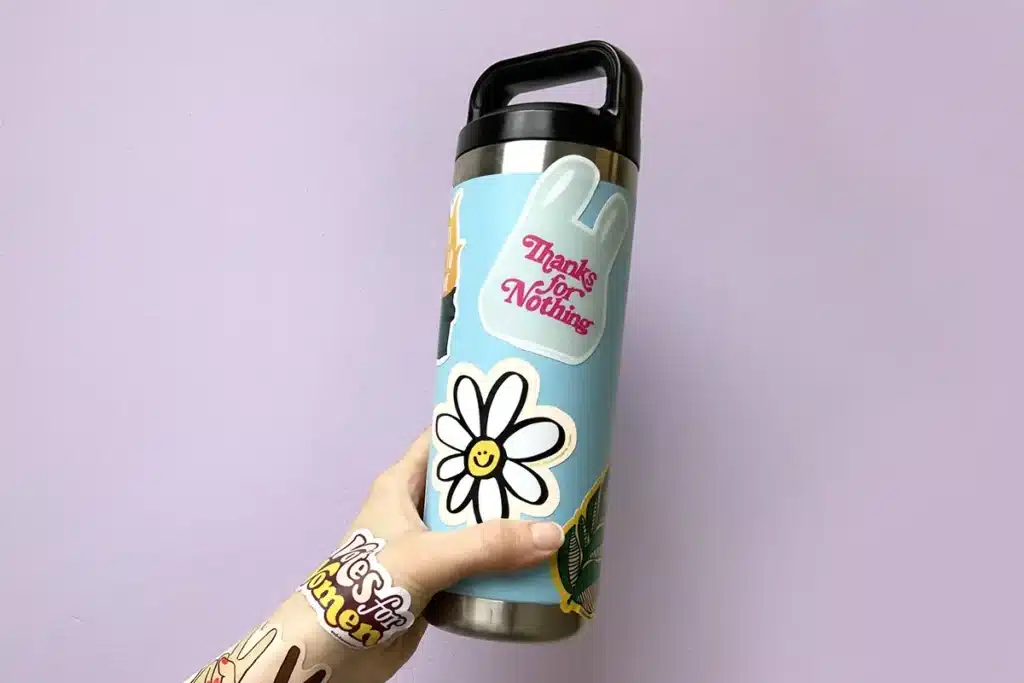
- Purpose: Start by defining the sticker’s application. For outdoor use, choose materials with high weather resistance. For decorative purposes, prioritize aesthetics and cost-effectiveness.
- Weather Resistance: Stickers exposed to the elements need to withstand water, UV rays, and temperature changes. Materials like vinyl and polyester ensure your stickers look great in any environment.
- Quality: Material quality varies significantly. For premium results, opt for polyester or vinyl. For short-term or low-cost uses, paper stickers can be sufficient.
- Cost: Budget constraints play a key role. Paper stickers are affordable and ideal for temporary applications, while premium materials like polyester and holographic stickers are more expensive but offer higher durability.
- Surface Finish: Finishes such as gloss, matte, or foil stamping influence both the sticker’s appearance and tactile experience, adding an extra layer of customization.
- Eco-Friendliness: Sustainability is becoming a priority. Choose recyclable materials like BOPP or PET to reduce environmental impact.
Tips for Choosing the Best Sticker Material
Follow these tips to make an informed decision when selecting sticker materials:
- Assess Your Needs: Consider factors like usage, durability, appearance, and budget to determine the best material for your purpose.
- Test Before Committing: Conduct small-scale tests to ensure the material meets your expectations for durability and quality before large-scale production.
- Plan for Longevity: For long-term use, prioritize materials with excellent weather resistance, such as vinyl or polyester.
How to Make Stickers Last Longer
To extend the lifespan of your stickers, follow these practical tips:
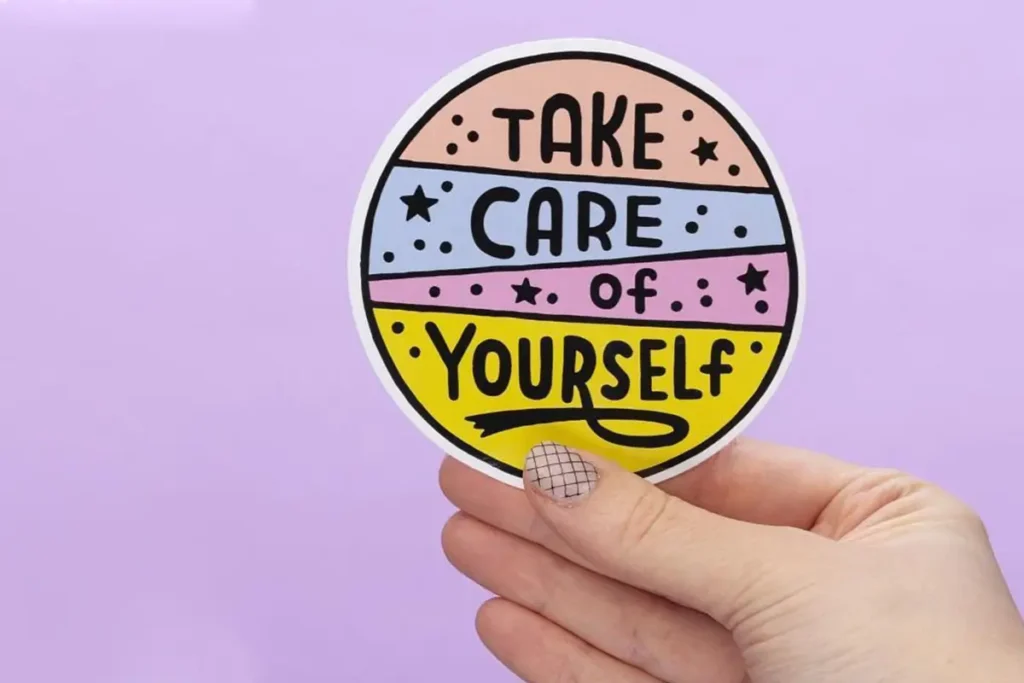
Choose High-Quality Materials: Opt for water-resistant, scratch-resistant options like vinyl or polyester to ensure durability.
Apply Correctly: Stickers adhere best to clean, smooth surfaces. Dust, grease, or uneven textures can compromise adhesion.
Avoid Direct Sunlight: Prolonged exposure to sunlight can accelerate fading. Place stickers in shaded areas when possible.
Regular Maintenance: Keep stickers clean by gently wiping them with a damp cloth to remove dirt and oil without damaging the surface.
FAQ: Common Questions About Sticker Materials
What is the best sticker material for outdoor use?
Vinyl stickers are the top choice for outdoor use. They are waterproof, UV-resistant, and highly durable. Matte or glossy vinyl works perfectly for advertisements, car decals, and other outdoor applications.
How can I choose an eco-friendly sticker material?
Go for recyclable materials like BOPP (Biaxially Oriented Polypropylene) or PET (Polyester). Ensure the adhesive is non-toxic and that the production process avoids solvents. These materials are both sustainable and high-quality.
What is the best material for transparent labels?
Clear vinyl is the ideal option. It offers high transparency, excellent visual effects, and is water- and smudge-resistant, making it perfect for bottle labels or window stickers.
What’s the safest sticker material for food packaging?
BOPP stickers are the go-to for food packaging. They are non-toxic, oil-resistant, and moisture-proof, making them ideal for snack bags or beverage labels.
How can I prevent stickers from fading?
Choose stickers made from materials with UV protection, like vinyl or polyester, and avoid prolonged sun exposure. A glossy finish can also help extend the sticker’s vibrant colors.
Which material is best for luxury product labels?
Holographic stickers and metallic stickers are perfect for luxury products. Their unique visual appeal adds a high-end look to branding and enhances a product’s premium feel.
What’s the best material for short-term promotional events?
Paper stickers are the most economical choice. They deliver excellent print quality and are perfect for temporary use, but they are not water-resistant or durable.
What should I do if a sticker won’t stick?
Make sure the surface is clean and dry, free of dust or grease. If the sticker has lost its adhesive, you can apply a small amount of glue or opt for repositionable sticker materials.
Which sticker material can withstand high temperatures?
Polyester (PET) stickers are highly heat-resistant, making them ideal for electronics or industrial uses where exposure to high temperatures is common.
Which material is best for high-quality, glossy printing?
Glossy vinyl or BOPP stickers are excellent choices. Their smooth surfaces provide vibrant colors and sharp images, making them perfect for intricate and eye-catching designs.
Conclusion
Choosing the right sticker material is essential for both the appearance and functionality of your product. Vinyl stickers are the most popular choice, thanks to their waterproof, scratch-resistant, and weatherproof properties, making them ideal for outdoor ads, car decals, and long-term use. Clear vinyl stickers offer high transparency, perfect for window and bottle labels, allowing the background to shine through. Meanwhile, holographic stickers stand out with their unique optical effects and anti-counterfeit features, making them the go-to option for luxury items and limited-edition products.
For labels that require water, oil, and chemical resistance, BOPP stickers are the ideal solution, widely used in food, cosmetics, and pharmaceutical packaging, with added eco-friendly benefits. Polyester (PET) stickers are heat-resistant and waterproof, making them perfect for industrial labels and premium applications. For short-term use or promotional campaigns, paper stickers are a budget-friendly option with excellent print quality, though they are not water-resistant.
When selecting materials, consider your application and needs to enhance both product performance and brand value.
Looking for custom stickers? Visit StickerPrintingChina for a wide range of material options. Let us help you create the perfect stickers to make your brand stand out!







